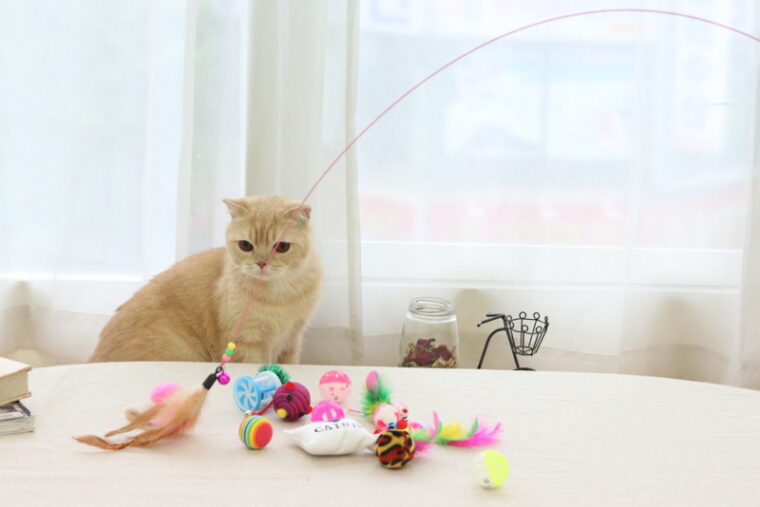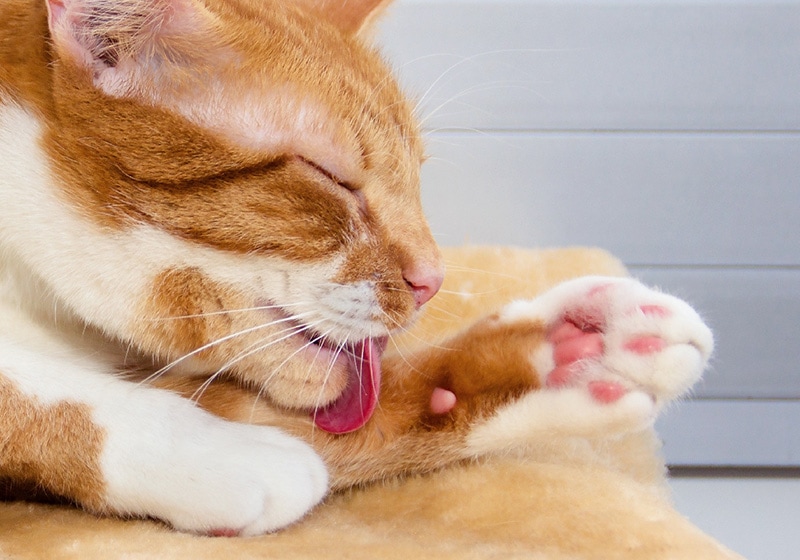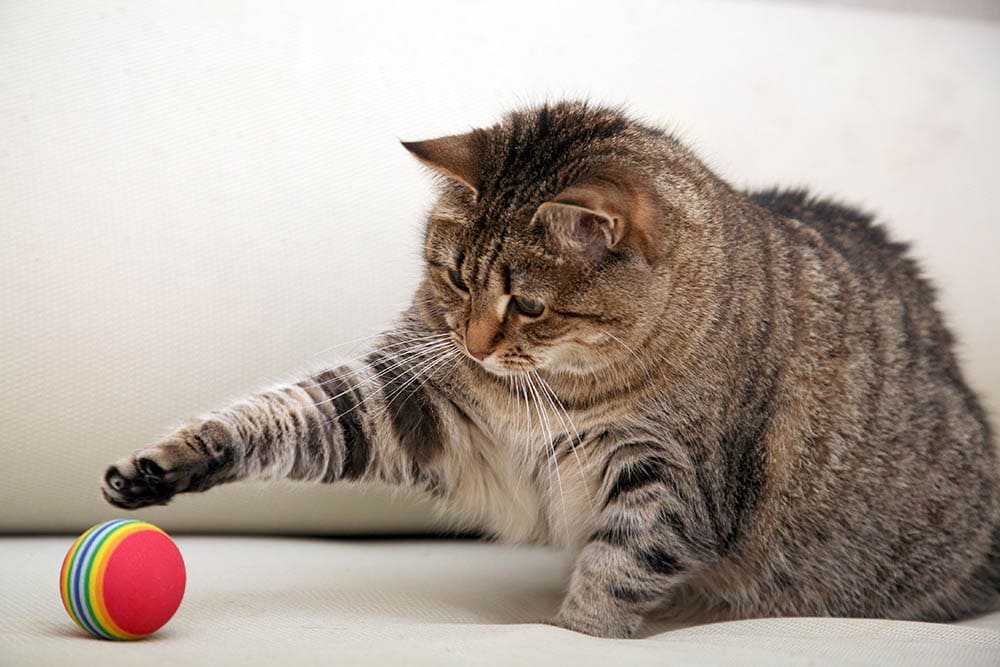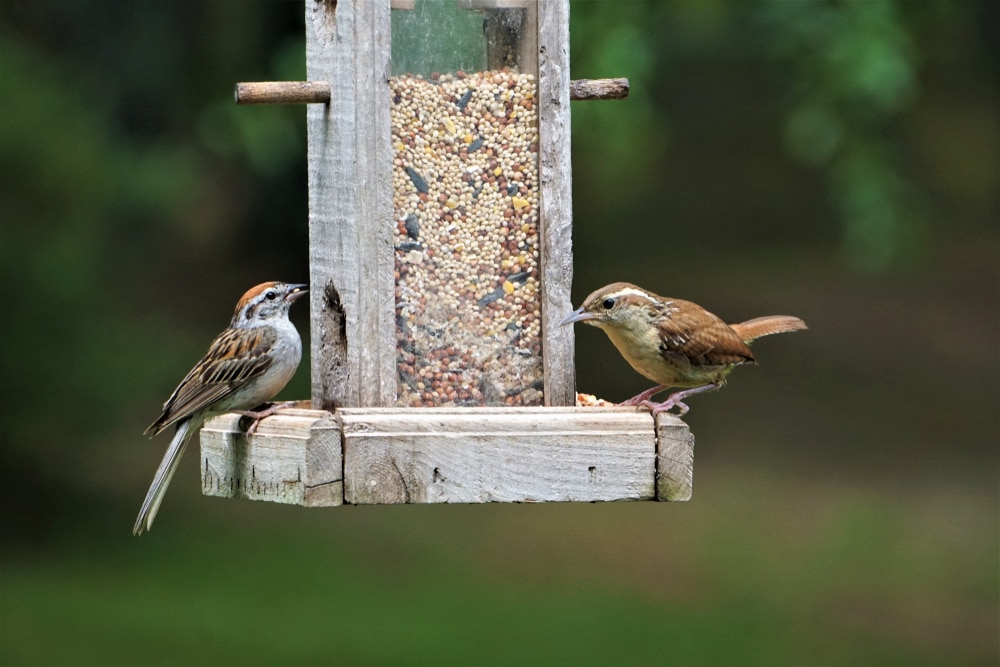
Cats are predatory animals that are hardwired to hunt, stalk, and pounce. In the wild, they spend a significant amount of time looking for food, climbing trees, and exploring their surroundings. Domestic cats, on the other hand, often lead a sedentary lifestyle and lack opportunities to engage in these natural behaviors.
This lack of stimulation can lead to boredom and behavioral issues such as aggression, depression, and destructive behavior. Mental stimulation for cats is essential for fulfilling their natural instincts and preventing these problems. So, let’s explore the top reasons why mental stimulation is crucial for your cat’s happiness and health.
The 5 Reasons Why Mental Stimulation Is Important for Cats
1. It Can Help to Reduce Problematic Behavior in Cats
When cats aren’t occupied, they may create their own fun by carrying out activities that are mischievous, destructive, or hazardous. Cats can become aggressive if they do not have anything to do or may start scratching your sofa.
When cats don’t receive enough physical and mental stimulation, they may start to show problem behaviors and become more prone to generalized and separation anxiety. Cats that are under-stimulated are more likely to be reactive and display fear aggression. If their physical and mental needs aren’t met, it can lead to negative and dangerous behavior.

2. Physical Activities and Mental Stimulation Can Help Form a Firm Bond
Establishing a strong relationship with your cat through physical activity and mental stimulation can be beneficial for both their emotional and physical health. Exercise helps to reduce negative behaviors and increase the bond between owner and cat. Playtime also provides an opportunity for your cat to learn commands and understand the acceptable behaviors. Encouraging an active lifestyle with your cat can help to prevent potential problems that may lead to cat abandonment.
3. Cats That Are Often Bored Can Develop Physical Illnesses
The potential ramifications of a lack of physical and mental exercise in cats can be far-reaching, from behavioral problems to medical issues. Cats, for example, may develop feline idiopathic cystitis, which is an inflammation of the bladder and accompanying inappropriate urination, if they’re not provided with environmental stimulation. Additionally, excessive licking, hair loss, sores, and skin infections may also be a result of boredom.

4. Engaging Activities Can Help to Stave Off Cognitive Decline
Throughout the life of your cat, they’ll require stimulation. Teaching them new skills, having them search for rewards, providing them with a food puzzle, or having them observe their area from a climbing tower can help their brains stay active even when they’re older. As cats age, they often experience cognitive dysfunction, similar to Alzheimer’s in humans. This can cause them distress if they cannot recall the location of their food bowl, how the door works or even people they know.
5. Keeping Pets Active with Frequent Physical Activity Can Help Prevent Obesity
The number of overweight and obese cats is greater than 50%, so now is an opportune moment to get your cat’s fitness program going. Being overweight increases the chances of animals developing osteoarthritis, cranial ligament tears, sprains, strains, and other weight-related injuries. By helping your cat maintain a healthy body weight, you can help protect them from these musculoskeletal problems in addition to obesity.
Ways to Provide Mental Stimulation for Cats
Cats can be easily entertained right at home. It may take a bit of ingenuity, but you typically shouldn’t have to spend a lot of money to keep your feline friends stimulated. Here are some great ways to keep your cat mentally stimulated.
1. Games, Puzzles, & Toys
One of the easiest ways to provide mental stimulation for your cat is through toys, puzzles, and games. There are many interactive toys available that can keep your cat engaged for hours. Toys that encourage your cat to hunt, chase, and pounce are especially effective.
Puzzle toys are another great option for mental stimulation. These toys require your cat to use their problem-solving skills to retrieve treats or toys from inside. Puzzle toys are not only mentally stimulating but can also help slow down fast eaters and prevent obesity. You can also use fun games to provide mental stimulation. Simple games like hide-and-seek or chasing a laser pointer can keep your cat engaged and entertained. It’s essential to watch over your feline buddy during playtime to make sure they’re playing safely.

2. Homemade Cat Toys & Games
If you’re looking for budget-friendly ways to provide mental stimulation for your cat, there are many DIY options available. One simple idea is to create a scavenger hunt for your cat by hiding treats or toys around your home. You can also create your own puzzle toy by cutting holes in a cardboard box and placing treats inside.
Another fun homemade activity is to create an obstacle course for your cat. You can use household items like boxes, tunnels, and pillows to create a challenging course for your cat to navigate. These types of do-it-yourself stimulation activities not only provide entertainment for your cat but can help you save money on toys and games.
3. Find Interactive Cat Toys
Interactive toys are those that necessitate involvement to be enjoyed. They sort of bring a different level of engagement and pleasure to the user that static toys cannot. These types of toys are designed to engage and entertain your cat.
They can provide a fun, entertaining experience that can help cats of all ages enjoy themselves. If you’re often absent from your house, you may want to invest in an interactive toy that your cat can activate on its own. These “sophisticated” cat toys are created to respond to movement, and some can even reset themselves if they are inverted or jammed in a corner.

4. Puzzle Treat Dispenser
For cats that are known to eat quickly, puzzle treat dispensers are a great way to make them work for the reward. These devices are made to challenge cats with mazes, balls, food trees, and diggers in order to sharpen their minds. These are ideal for cats that are by themselves for lengthy periods, like when you’re at work.
5. Get Your Cat a Friend
A great way to keep your cat entertained is to introduce it to another feline. After they have become accustomed to each other, they will engage in activities such as running, playing, and chasing, all of which can stimulate the mind. Think of it as a child having one or two more siblings. Remember that getting another cat will, however, lead to more bills and more maintenance. So be sure to prepare your budget ahead of time.
6. Utilize Shipping Containers & Shopping Bags
Those brown paper bags and cardboard boxes that you often toss out are cost-efficient and can be recycled. Plus, cats seem to get quite excited over them. For example, an oversized box with peek-a-boo holes cut into it or a large crinkly shopping bag will provide hours of entertainment for your cat. The great thing about these mentally stimulating activities is that they’re inexpensive to replace when they become worn out.

7. Play Videos on TV Featuring Cats & Other Animals
Turn your home into a nature-filled paradise for your cat with specially designed videos. These videos provide up-close views of a variety of outdoor creatures such as birds, squirrels, and fish. Your feline friend will be captivated by the action-packed scenes from the comfort and safety of your home.
After several periods of watching, your cat may become familiar with the movements of the wildlife on-screen and start to pursue and hunt these televised creatures.
8. Set Up an Outdoor Bird Feeder
If your cat loves to watch birds or squirrels, why not put up a feeder right outside your window? That way, your cat will have something to occupy their mind with. Make sure there is a tall scratching post or some other sturdy item close to the window so your cat can climb onto it and observe nature in all its glory.
Birds can be easily attracted to windows with the help of feeders that come with suction cups for easy mounting outdoors. From a cat’s perspective, there is no better sight than observing birds coming to the window.

9. Build an Agility Course
Many people think that agility courses are just for dogs, but it’s possible to create one for cats too. You can use everyday items like tunnels, cardboard boxes, and furniture to construct an enjoyable and mentally stimulating agility course for your feline in the comfort of your own home. Tempt your kitty with a plaything dangled on the end of a stick or rod and lead them through a course. Afterward, give them a delicious snack as a reward.
10. Leash Train Your Cat
Leashing your cat is an important part of responsible ownership if your cat is going to be spending time outdoors. It can keep them safe and prevent them from running away. Yes, most house cats don’t spend as much time outdoors as dogs, but it can still be helpful. It’s best to first find the right leash and harness size for your cat, as these leashes are typically smaller and thinner than those made for dogs.
You’ll also want to ensure that the leash and harness are comfortable for your cat to wear. Let them wear it around the house for a bit and reward them with treats. Once they’re used to it, start taking them outside and let them explore their surroundings while on the leash.

Wrapping Things Up
Mental stimulation is essential for keeping your cat happy and healthy. When cats are bored, they may engage in destructive activities, including scratching furniture or chewing on plants. Mental stimulation also helps reduce anxiety and stress in cats.
From interactive toys to environmental enrichment, there are many ways to provide mental stimulation for your feline friend. Incorporating mental stimulation into your cat’s daily routine can prevent behavioral issues, improve their overall health, and strengthen the bond between you and your cat.
Featured Image Credit: winni-design, Shutterstock








